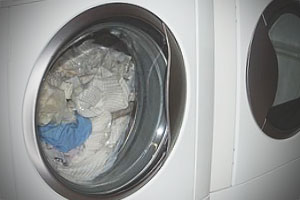 Recent articles in USA Today and California's Flex Your Power e-Newswire discussed the phenomenon known in energy efficiency circles as "take back" or the "Snackwell Effect" (see "Consumers Can Sabotage Energy-Saving Efforts," and "The Snackwell Effect: Consumers Sabotage Energy-Saving Efforts").
Recent articles in USA Today and California's Flex Your Power e-Newswire discussed the phenomenon known in energy efficiency circles as "take back" or the "Snackwell Effect" (see "Consumers Can Sabotage Energy-Saving Efforts," and "The Snackwell Effect: Consumers Sabotage Energy-Saving Efforts").
Stanley Jevons first described the take back effect in 1865, so this is nothing new. Jevons observed that new efficient steam engines decreased coal consumption, which led to a drop in coal prices. But the lower prices meant that more people could afford to use coal, and so coal consumption increased.
The "Snackwell Effect" takes it's meaning from the habit of people on diets who eat lots of low-cal snacks that add up to many times the calories of a regular snack. The example given in both articles mentioned above is a West Virginia couple that bought an energy efficient washing machine to replace their old inefficient one. Their energy bills were no different after the conversion. Turns out they were doing more loads of laundry, even washing one piece of clothing in one load, because they were lulled into complacency by their energy efficient purchase.
I asked Jim McMahon, the head of the Energy Analysis Program at Lawrence Berkeley National Laboratory (LBNL), about the Snackwell Effect and appliance energy use. I recently heard him speak about the great efficiency gains made between the first energy crisis brought on by the Arab oil embargo in 1973, and today. Those gains are significant; refrigerators today use about half the energy on average than they did in the 1970s. "This effect [Snackwell Effect] has been studied for a long time, [it was] formerly called the rebound or take back effect," he says. One 2001 study concluded that for every gain in energy efficiency, about 10% is taken back by an increase in energy use. Greater air conditioner efficiency, for example, may mean that people lower their thermostats, since they expect their energy bills to be lower, and this eats into the efficiency savings. "I think that there are a number of energy-using devices where consumers do not exhibit the Snackwell effect, such as refrigerators or televisions. In those cases, in my view, the usage behaviors are unrelated to the cost of energy, at least for most households in the United States," says McMahon. He does admit that more study is needed in this area. A 10% take back effect is significant, but certainly not a barrier to serious energy efficiency improvements.
Karen Ehrhardt-Martinez, a sociologist, studies human behavior and energy use for the American Council for an Energy Efficient Economy (ACEEE). "The relationship between energy efficiency and energy consumption is not as straightforward as it may initially appear and as some people like to portray it."
